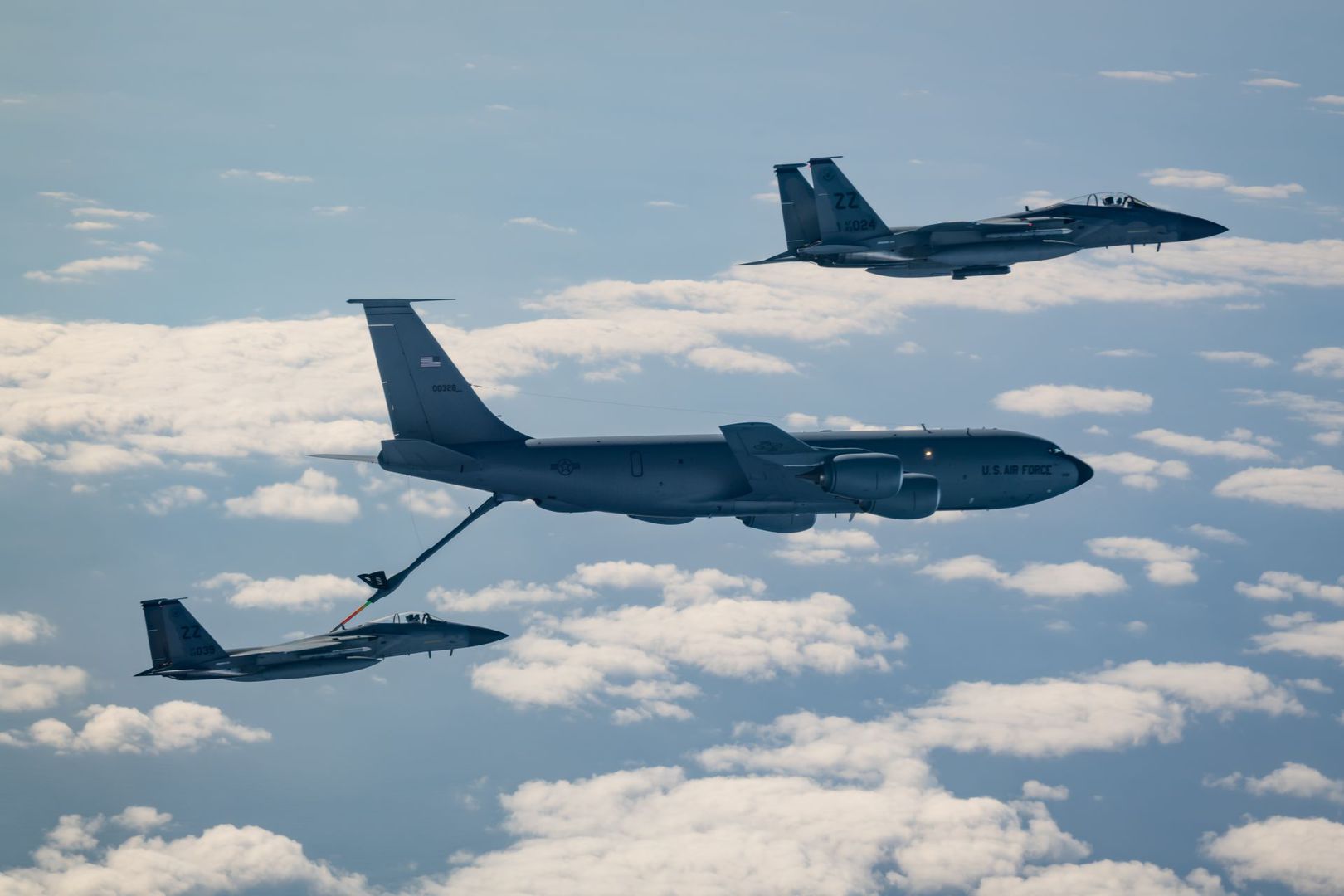KADENA AIR BASE, Japan: More than 60 aircraft and 300 personnel from the Air Force, Navy, Army and Marine Corps participated in 18th Wing’s first WestPac Rumrunner exercise Jan. 10.
With the evolving security environment in the Indo-Pacific and to further support a safe and secure region, the 18th Wing spent months designing WestPac Rumrunner as an exercise to train counter-air capabilities and strengthen joint interoperability. In addition to air tactics and joint interoperability, Airmen were charged with ensuring continuous airpower by using tactics derived from Pacific Air Force’s agile combat employment, or ACE, concept of operations.
“As we executed this first iteration of Rumrunner, the exercise development team monitored how well our distributed joint forces came together and applied elements of ACE to disperse, recover and rapidly resume operations,” said Capt. Brian Davis, 67th Fighter Squadron F-15C Eagle evaluator pilot and WestPac Rumrunner exercise director. “The Rumrunner team looks forward to how we will continue to evolve and hone our procedures in the future.”
As the largest combat wing in the Air Force, Kadena Air Base was able to deploy a wide array of aircraft to simulate a realistic training scenario along with support from joint forces. The adversary air force primarily consisted of the Navy’s F/A-18E/F Super Hornets and Air Force’s Eagles, but the home team brought overwhelming joint capabilities to deny the adversarial advance.
F-15Cs defended the airspace and the KC-135 Stratotanker provided aerial refueling, while the 353rd Special Operations Group’s MC-130 Commando II dramatically extended the range and combat capabilities within the battlespace.
But, most unique to this exercise was the air-to-air and air-to-ground command and control provided by the Air Force’s E-3 Sentry, Navy’s E-2 Hawkeye and 18th Wing’s 623rd Air Control Squadron, all of whom worked seamlessly to ensure battlespace situational awareness while expertly handing-off key targeting information to the U.S. Army’s 1-1 Air Defense Artillery’s Patriot surface-to-air missile battery. Marine Air Control Squadron-4 helped track the operations and were able to test integration capabilities for their systems at Marine Corps Air Station Futenma, Japan.
“My unit and I were excited to be participating in a joint large force mission of this type. We had the unique opportunity to work with the Army ADA through the 623rd ACS to integrate as a cohesive air defense team,” said Capt. Shawn Storey, 961st Airborne Air Control Squadron. “This exercise delivered a great opportunity to plan, execute and debrief in person to develop relationships and hone our joint integration, communications and execution skills face-to-face.”
As part of the ACE strategy, to extend and improve the availability of aircraft during a contingency, Air Force maintenance Airmen were positioned on the ground at MCAS Futenma to provide a quick refuel so the aircraft could swiftly be launched and returned to the fight.
“The ACE concepts being developed are not confined by current maintenance doctrine or tactics,” explained Lt. Col. Johnny West, 18th Maintenance Group deputy commander. “Our senior leaders are encouraging maintainers and logisticians to be more creative and assertive at lower levels to overcome generation and re-generation limitations that could occur in a highly-contested environment,” he said. “Today’s Rumrunner exercise allowed us to practice operating in a simulated austere environment, which is fundamental to the ACE concept, and our maintainers successfully refueled F-15s and launched them back into the air.”
Overall, Brig. Gen. Joel L. Carey, 18th Wing commander, described WestPac Rumrunner as a success and a valuable learning tool for Pacific Air Forces and joint services.
“I couldn’t be more proud of our efforts today,” Carey said. “This event was a big win for us in the Pacific. Being able to test our ACE capabilities with our joint partners highlights the importance of interoperability and the capabilities of our Airmen and sister services. Working in conjunction with the Navy, Army and Marine Corps was crucial to the success of Rumrunner and its ability to be a powerful learning tool moving forward.”










